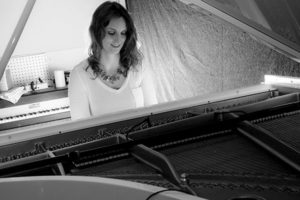
Piano as a Second Instrument
If you already know how to play an instrument such as saxophone, clarinet, bassoon or flute, you are well on your way to successfully playing the piano. You already have an understanding of theory and how to read music, playing either in treble, bass or a c-clef. Note values, or duration of the notes, are no mystery to you, whether quarter, half, full, eighth, sixteenth notes and triplets – maybe even 32nd notes. You also know about key and time signatures.
But what else is there to know?
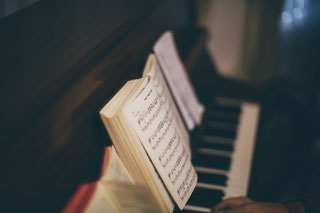 Just the same as with your first instrument, playing the piano is more than just reading notes on the staff. You may already know this if you’ve been trying to teach yourself to play and why you’re seeking lessons. It’s simple enough to the knowledge you already have to the keyboard, since the keys have an easily-recognized visual pattern up and down – seven white keys, sets of two black keys, sets of three black keys.
Just the same as with your first instrument, playing the piano is more than just reading notes on the staff. You may already know this if you’ve been trying to teach yourself to play and why you’re seeking lessons. It’s simple enough to the knowledge you already have to the keyboard, since the keys have an easily-recognized visual pattern up and down – seven white keys, sets of two black keys, sets of three black keys.
You can read the notes just fine but something is missing. It’s the same thing as what you’ve already worked on with your current instrument.
To be a great player, you need to play expressively. To play expressively, you need finger strength and dexterity for controlled dynamics, a deep understanding of the fingering required to make smooth transitions, the ability to quickly sightread relatively complex music, and a well-developed sense of rhythm. You must also be able to move both hands independently, simultaneously or even switch back and forth – depending on which is carrying the melody and which is carrying the bass.
If you want to compose your own music, you’ll probably want to dive deeper into theory. Knowledge of chords, voicing and modes are all powerful tools that will enhance the creativity available to your fingertips.
Key Piano Concepts
To be a great player, you need…
1. Finger Strength and Dexterity (for complexity)
Finger strength and dexterity will come from a combination of drills and playing “lesson” songs that often sound boring but have been arranged for the purpose of training your hands – and then applying what you have learned to music that you enjoy.
The more strength and dexterity you have, the more ‘athletic’ we can consider your fingers. Just as an athlete seems to move fluidly and effortlessly across a field or a dance stage, your fingers can glide across the keyboard or sauté from note to note.
Depending on the style of music you would like to play, there are numerous ways you can get to where you want to go – some of them more quickly and easily than others. Different genres have different “moves” so to speak, and we can either focus more on what you are interested in or go the full-on classical route!
2. Finger Strength and Dexterity (for dynamic expression)
After mastering the different “moves” as mentioned above, a great player of any genre needs to play expressively. You need to play with control in regards to volume (e.g. piano, forte, crescendo, decrescendo), tempo changes (e.g. ritardando, accelerando), and articulations (e.g. staccato, tenuto, marcato, fermata).
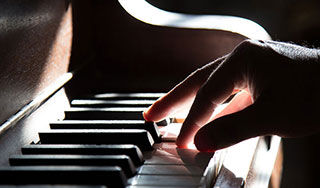 Dynamic expression can be compared to the implicit ways we communicate in speech through, volume, tone of voice, body language – everything above and beyond the literal words we use. To play without dynamic expression is to speak mono-tonally. Or, even if using inflection to imply a question or a statement, it is the difference between yelling a question versus asking gently.
Dynamic expression can be compared to the implicit ways we communicate in speech through, volume, tone of voice, body language – everything above and beyond the literal words we use. To play without dynamic expression is to speak mono-tonally. Or, even if using inflection to imply a question or a statement, it is the difference between yelling a question versus asking gently.
3. Fingering
An understanding of fingering prevents your fingers from tripping over one another as you move up and down the keyboard.
In the beginning, fingering is STATED – so you’ll know exactly how to move. Beginning books also often keep your hands in the same position, as well, so you’ll always be using the same fingers to play the notes throughout the entire song or piece.
As you progress, the fingering numbers will slip away, as you will begin to understand the IMPLIED fingering. Only a landmark fingering will be provided, so you know where to begin. Or, perhaps a few tricky notes will be labelled with fingering.
However, eventually, you will play music that has no fingering listed whatsoever – not even landmarks. This is because you will already understand fingering through playing exercises and patterns which exist throughout music and across genres. At this point, you will probably already have developed some personal preferences on fingering. Ideally, these will have been developed in conjunction with proper technique. Proper technique both prevents injury and allows you to play efficiently.
4. Sightreading
You already know how to read at least one clef, but adding a second makes things a bit more complex. You need to be fluent in both.
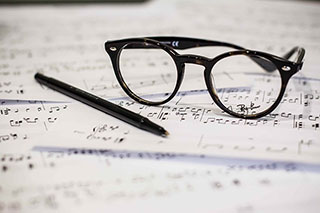 The ability to sightread well allows you to pick up any piece of music and master it quickly. The better you sightread, the more quickly you will involve dynamics and expression – perhaps even playing expressively upon first reading!
The ability to sightread well allows you to pick up any piece of music and master it quickly. The better you sightread, the more quickly you will involve dynamics and expression – perhaps even playing expressively upon first reading!
Training your brain to sightread allows you to become better at recognizing patterns in song structure, fingering, chord progressions, etc. Conversely, understanding these other aspects of music will also help you improve your sightreading.
5. Rhythm
If your previous instrument was a bass, a cello, drums, a guitar, or maybe you are just inherently rhythmic, you probably have a great understanding of rhythm. Otherwise, you probably have room to improve as your instrument likely did not require this unless you played a more rhythmic melody.
The piano will be a challenge but it will be a great way to utilize your understanding of melody to become more rhythmic! Especially as you start out, the left hand will typically play all the rhythm patterns – and seeing where they line up with the melodies you’re used to seeing will help you understand how to play them.
6. Two Hands – Together but Separate
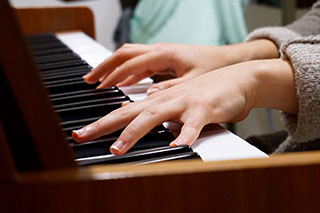 If you want to play piano solos, you will be carrying both melody and bass! If you look at a complex piece of music, this may seem a bit like rubbing your belly and scratching your head. However, there are a number of ways to get your hands to either work independently, together, and allow them to take turns.
If you want to play piano solos, you will be carrying both melody and bass! If you look at a complex piece of music, this may seem a bit like rubbing your belly and scratching your head. However, there are a number of ways to get your hands to either work independently, together, and allow them to take turns.
As usual, the type of music you want to play will dictate the lesson plan to take you further, faster.
7. Theory for Composition
If you wish to compose, there is quite a bit of theory that you aren’t likely to encounter in regular piano lessons or if you are completely self-taught.
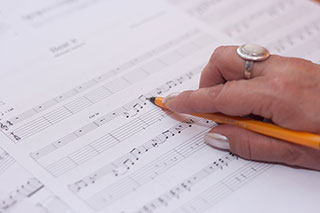 Piano lessons and self-taught methods typically focus on what you need to know in order to play. They don’t break down the songs or reverse engineer them to make music. This sort of activity requires years of playing and studying or the help of a teacher. Sure, you could shortcut and take standard progressions from modern music (the blues one-four-five aka I-IV-V, pop’s four chord progression aka I-V-vi-IV) but you can be so much more creative than that if you want to be.
Piano lessons and self-taught methods typically focus on what you need to know in order to play. They don’t break down the songs or reverse engineer them to make music. This sort of activity requires years of playing and studying or the help of a teacher. Sure, you could shortcut and take standard progressions from modern music (the blues one-four-five aka I-IV-V, pop’s four chord progression aka I-V-vi-IV) but you can be so much more creative than that if you want to be.
The quality of modern music would improve greatly with more understanding of music theory. Ears are tired of the same old progressions and perk up with the sound of something different.
Piano Lessons Boost Your Learning
While you can certainly teach yourself, taking lessons with the right teacher is the fastest, most effective and reliable way to learn the instrument. The right teacher will take the time to understand what interests you in music, your goals, what natural abilities or previous knowledge you are coming in with, as well as your learning style.
If you are interested in taking lessons with me, please visit the About Lessons with Jacqueline page. Or, send me an inquiry using the form below.
Related Articles Recommended for You

Read More

Read More

Read More

Read More

Read More

Read More

Read More

Read More

Read More

Read More
